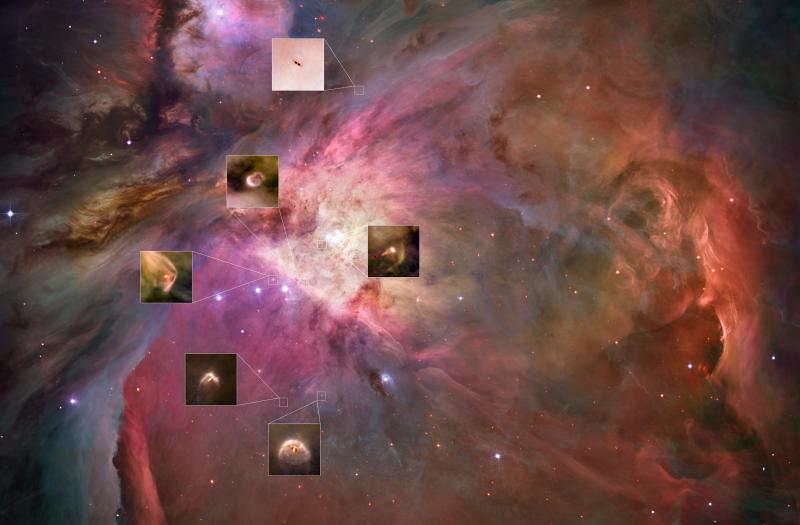JWST: a new look at the interstellar matter at the origin of planetary systems
Often portrayed as the successor to the Hubble Space Telescope, the James Webb Space Telescope (JWST) will be, once deployed, the largest telescope ever launched into space. Through its observations in the mid infrared, it will revolutionize our understanding of the Universe. Developed by NASA, the European Space Agency (ESA) and the Canadian Space Agency (CSA), in partnership with numerous laboratories around the world, its launch is scheduled to take place on an Ariane 5 rocket by spring 2019. Six months after launch, the astronomers from all around the world will have immediate access to the data issued from the first-ever observation programs.
These so-called “Early release science programs” have just been selected by the Space Telescope Science Institute (STScI) which manages the JWST’s scientific operations on behalf of NASA. Among the one hundred proposals submitted by the scientific community, thirteen have been selected. They will highlight the potential of the four on-board scientific instruments by covering topics as varied as the study of the most distant galaxies, of the exoplanets, of Jupiter and its moons, or the search for organic molecules around the stars.
One of the selected programs is jointly led by the Institut de Recherche en Astrophyssique et Planétologie de Toulouse (IRAP, CNRS/Université de Toulouse III Paul Sabatier), the Institut d’ Astrophysique Spatiale (IAS, CNRS/Université Paris-Sud) and the University of Western Ontario (Canada). This program also involves other French laboratories* and teams from 18 other countries. The selection of this programme in an extremely competitive international context is proving to be a great success for the French scientific community involved.

This program aims to observe regions of our galaxy located at the interface between dense clouds, where stars are born, and scattered and ionized regions. As the seat of intense physico-chemical processes, these interfaces emit an extremely rich spectrum of radiation, which is responsible for a large part of the infrared emission of the galaxy. These regions are thus unique laboratories for the study of multiple microphysical processes in galaxies that are still misunderstood and which lead in particular to the formation of stars and of their planetary systems.
Previously, the observations provided only a very comprehensive view (resulting from a complex combination of physical, chemical and dynamic processes). Soon, the JWST will observe these interface regions with an unprecedented accuracy. Its angular resolution and its exceptional sensitivity will allow to map them on a very small spatial scale. Through the different physical and chemical boundaries, we will have access to the physical conditions of a hyper-structured environment (with interwoven filaments and “globules”), and to the chemical composition of the species present. Thus, the JWST will offer a new look at the evolution of interstellar matter, and at the causal relationships between the existing stars and the ongoing formation of stars.
Note(s):
- CSNSM (CNRS/Univ. Paris-Sud), DAp/AIM (CEA Saclay), IAP (CNRS/UPMC), IPAG (CNRS/Univ. Grenoble), IPNO (CNRS/Univ. Paris Sud), IRAM, ISM (CNRS/Univ. Bordeaux), ISMO (CNRS/Univ. Paris-Sud), LATMOS (CNRS/UPMC/Univ. Versailles), LERMA (ENS/Observatoire de Paris)
Further Resource
IRAP Contact
- Olivier Berné, olivier.berne@irap.omp.eu






